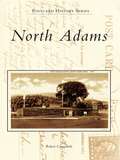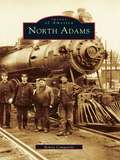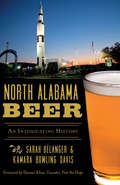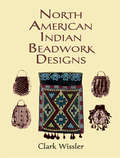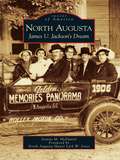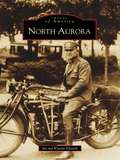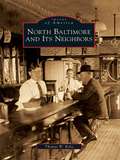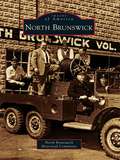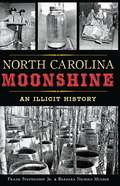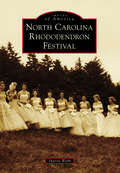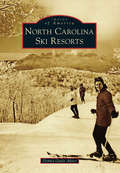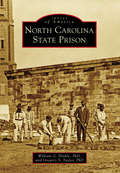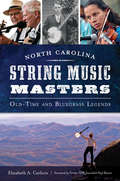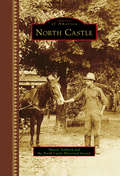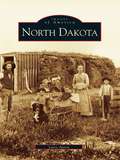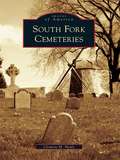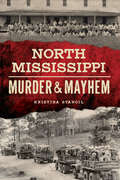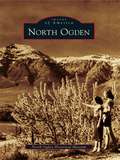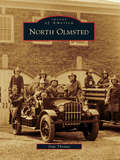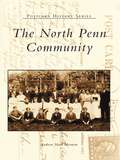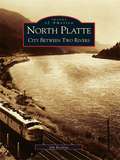- Table View
- List View
Normporn: Queer Viewers and the TV That Soothes Us (Postmillennial Pop #38)
by Karen TongsonAn irreverent look at the love-hate relationship between queer viewers and mainstream family TV shows like Gilmore Girls and This Is Us After personal loss, political upheaval, and the devastation of the COVID-19 pandemic, many of us craved a return to business as usual, the mundane, the middlebrow. We turned to TV to find these things. For nearly forty years, network television has produced a constant stream of “cry-along” sentimental-realist dramedies designed to appeal to liberal, heterosexual, white America. But what makes us keep watching, even though these TV series inevitably fail to reflect who we are?Revisiting soothing network dramedies like Parenthood,Gilmore Girls, This Is Us, and their late-80s precursor, thirtysomething, Normporn mines the nuanced pleasures and attraction-repulsion queer viewers experience watching liberal family-centric shows. Karen Tongson reflects on how queer cultural observers work through repeated declarations of a “new normal” and flash lifestyle trends like “normcore,” even as the absurdity, aberrance, and violence of our culture intensifies. Normporn allows us to process how the intimate traumas of everyday life depicted on certain TV shows—of love, life, death, and loss—are linked to the collective and historical traumas of their contemporary moments, from financial recessions and political crises to the pandemic.Normporn asks, what are queers to do—what is anyone to do, really—when we are forced to confront the fact of our own normalcy, and our own privilege, inherited or attained? The fantasies, the utopian impulses, and (paradoxically) the unreality of sentimental realist TV drama creates a productive tension that queer spectators in particular take pleasure in, even as—or precisely because—it lulls us into a sense of boredom and stability that we never thought we could want or have. .
North Adams
by Robert CampanileThe history of North Adams is a portrait of survival and a celebration of diversity, which is not only expressed in its citizens and their ancestry but also in the many faces that the city and its environment have taken on through the years. From the isolated military outpost that fought a dramatic battle in the mid-1700s, through the roller-coaster ride of prosperity and economic depression endured by its citizens, North Adams exemplifies the strength that is a trademark of New England. North Adams contains an unusual collection of rare photographs that celebrate every aspect of the city. The book exemplifies how the population is a mosaic of cultures that sought a better life and wove an atmosphere of acceptance and sharing. An important part of that better life included the industry that made indelible imprints on the nation's history by producing pig iron for the Civil War's famous Monitor ironclad, by the engineering feat of the Hoosac Tunnel, and by leading the nation in the manufacture of fabrics, shoes, and electric capacitors. The diverse architecture that dominates hillside church steeples, the long gone Victorian depot station, the devastating floods, the majestic hot-air balloons, and the everyday faces of citizens are all captured here in striking photographs. Together they create the story of a city that always found a way to survive.
North Adams (Images of America)
by Robert CampanileThe history of North Adams is a portrait of survival and a celebration of diversity.This celebration is not only expressed in its citizens and their ancestry but also in the many faces that the city and its environment have taken on through the years. From the isolated military outpost that fought a dramatic battle in the mid-1700s, through the roller-coaster ride of prosperity and economic depression endured by its citizens, North Adams exemplifies the strength that is a trademark of New England. North Adams contains an unusual collection of rare photographs that celebrate every aspect of the city. The book exemplifies how the population is a mosaic of cultures that sought a better life and wove an atmosphere of acceptance and sharing. An important part of that better life included the industry that made indelible imprints on the nation's history by producing pig iron for the Civil War's famous Monitor ironclad, by the engineering feat of the Hoosac Tunnel, and by leading the nation in the manufacture of fabrics, shoes, and electric capacitors. The diverse architecture that dominates hillside church steeples, the long gone Victorian depot station, the devastating floods, the majestic hot-air balloons, and the everyday faces of citizens are all captured here in striking photographs. Together they create the story of a city that always found a way to survive.
North Alabama Beer: An Intoxicating History (American Palate)
by Danner Kline Hops Kamara Bowling Davis Sarah BélangerNorth Alabama built its fi rst commercial brewery in Huntsville in 1819, three months before the state joined the Union. Before Prohibition in 1915, the region was peppered with numerous saloons, taverns and dance halls. Locals still found ways to get their booze during Prohibition using Tennessee River steamboats and secret tunnels for smuggling. Alabama re-legalized beer in 1937, but it wasn't until 2004, when the grass-roots organization Free the Hops took on the state's harsh beer laws, that the craft beer scene really began to flourish. Authors Sarah Bélanger and Kamara Bowling Davis trace the history of beer in North Alabama from the early saloon days to the craft beer explosion.
North American Indian Beadwork Designs
by Clark WisslerThis concise volume documents a fascinating and unique art form -- Native American beadwork. Including examples of handiwork from Eastern woodlands and Plains Indians, the author offers a clear, illuminating discussion of the origins, execution, and symbolism of Indian beadwork used to ornament belts, garters, pouches, and much more. Over 300 figures.
North American Indian Beadwork Patterns (Dover Crafts: Bead Work)
by Pamela Stanley-MillnerIn these pages you'll find 73 charts for bead weaving and 12 full-page patterns for bead appliqué — all taken from authentic craftwork of the Cheyenne, Sioux, Crow, Sauk & Fox, Winnebago, Kickapoo, Cree, Arapaho, and other Native American groups. Complete instructions are provided along with color keys for every chart and pattern.Use the charts to weave belts, headbands, sashes, necklaces, and other eye-catching accessories. You'll find the appliqué patterns are perfect for decorating leather, denim, and other fabrics. It's a great way to embellish handbags, vests, blouses, and other apparel and personal items. By following the clear step-by-step instructions in this book, even beginners can create a host of attractive beadwork projects with authentic Native American flavor.
North Augusta: James U. Jackson's Dream
by Jeanne M. Mcdaniel North Augusta JonesThe story of James U. Jackson and the history of North Augusta are inseparable. In the 1800s, James U. Jackson was one of the youngest railroad officials in the country. As a boy, he dreamed of developing the area on the bluffs across the Savannah River from Augusta, Georgia. That dream became a reality in 1906, when the community of North Augusta was incorporated. Not only a man of vision, Jackson's energy, drive, and personality enabled him to secure financial backing from several cities for his business ventures. His interurban railway, one of the first in the South, contributed to the development of the area's resort hotel industry, which catered to many people from the North during the winter months. Today, North Augusta's riverfront development continues, distinguishing it as a strong and independent community. James U. Jackson's dream continues to prosper.
North Aurora: 1834-1940 (Images of America)
by Jim Edwards Wynette EdwardsNorth Aurora: 1834-1940 is a quintessential study of what happened when settlers arrived in the Midwest in the 1830s. The village's location on the Fox River provided plentiful trees and waterpower for sawmills. Soon other mills, smelting works, a packing plant, a door-sash-blind factory, and a creamery all came to town. The village's railroad enabled its Boswell Cheese Factory to ship cream cheese to England in 1877. By 1922, North Aurora had a huge entertainment complex, a popular racetrack, and a hotel. Today the village is growing rapidly but still maintains its rural atmosphere.
North Baltimore and Its Neighbors
by Thomas W. BoltzLocated 25 miles south of Toledo, North Baltimore and its neighboring communities have seen dramatic changes since being settled in the 1830s. Pioneers labored to establish small farms and villages in the midst of what was then the Black Swamp, gradually achieving modest but precarious success. Then, in the 1880s, oil was discovered. The area flourished, attracting speculators, turning farmers into millionaires, and transforming quiet villages into rough-and-tumble boomtowns. It was a colorful period that also brought large homes, imposing commercial buildings, and grand town halls. However, by 1915, the oil field was depleted, and North Baltimore and its neighbors returned to their existence as quiet towns. Since then, many of the beautiful old buildings have disappeared, obscuring evidence of the area's dynamic history. With over 200 pictures, many from private collections, North Baltimore and Its Neighbors helps ensure that this history will not be forgotten.
North Brunswick
by North Brunswick Historical CommitteeNorth Brunswick, a large town spread over 12 square miles, has a rich history extending back to the early 1600s, when its only occupants were members of the Lenni-Lenape tribe. Some of the earliest establishments included the Black Horse Tavern building, which in 1670 was a stagecoach stop, and the Lion Tavern. By 1750, a gristmill operated near where a dam is currently located on Farrington Lake and was later joined by a snuff mill and tannery. From 1775 through 1900, the area was almost entirely agricultural. The first church, the Georges Road Baptist Church, was erected in 1847, and the first school committee was elected in 1829. By the dawn of the 20th century, North Brunswick began to come into its own, projecting the image of the thriving community it is today.
North Caddo Parish (Images of America)
by Sam CollierIn 1835, the United States purchased close to one million acres of land from the Caddo Confederacy of Native Americans; the Louisiana portion became known as Caddo Parish. The Indian agency's protection of that land delayed the settlement of the parishfor 25 years or more after it began in other parts of Louisiana, Texas, and Arkansas. The Red River logjam that existed for a few hundred years backed up bayous, which in return created navigable streamsand lakes. The uplands contained massive stands of virgin timbers and bountiful fruit, berries, fish, and game. The first land patents were sold in 1841, and by 1850, the area was known as Caddo Prairie. For a majority of the next 100 years, steamboat traffic, homesteaders, plantations, subsistence farmers, logging operations, entrepreneurs, and a building boom brought on by the railroad and oil industries uniquely melded to define local, cultural history. Today three towns and five villages are located in north Caddo Parish, while the memories of 10 historic communities remain strong.
North Carolina Moonshine: An Illicit History
by Barbara Nichols Mulder Frank Stephenson Jr.North Carolina holds a special place in the history of moonshine. For more than three centuries, the illicit home-brew was a way of life. NASCAR emerged from the illegal moonshine trade as drivers such as Junior Johnson, accustomed to running from the law, moved to the racetrack. A host of colorful characters populated the state’s bootlegging arena, like Marvin “Popcorn” Sutton, known as the Paul Bunyan of moonshine, and Alvin Sawyer, considered the moonshine king of the Great Dismal Swamp. Some law enforcement played a constant cat-and-mouse game to shut down illegal stills, while some just looked the other way. Authors Frank Stephenson and Barbara Mulder reveal the gritty history of moonshine in the Tar Heel State.
North Carolina Rhododendron Festival (Images of America)
by Sharon WebbDeep in the heart of the southern Appalachian Mountains lies Roan Mountain, the second-highest peak east of the Mississippi and home to one of the most breathtaking, naturally recurring phenomenon in the world: 600 acres of Catawba rhododendron that bloom each year in mid-June. In an effort to promote tourism and draw attention to this area, North Carolina and Tennessee joined together to form the Rhododendron Festival in 1946. As attendance increased, it soon became necessary for each state to hold a separate festival, and in 1952, the first North Carolina Rhododendron Festival took place. Since then, Bakersville, a village nestled at the base of Roan Mountain, has hosted the North Carolina Rhododendron Festival. Visitors and locals gather to pay homage to one of nature's most magnificent wonders. After nearly seven decades, the festival continues to hold the distinction of being among the oldest and most respected festivals in the Southeast, confirming its potential to endure as long as the mountain itself.
North Carolina Ski Resorts (Images of America)
by Donna Gayle AkersDuring the early 1960s, local leaders in western and northwestern North Carolina were dedicated to developing winter recreational opportunities in the mountains. North Carolina�s ski industry dates back to the winter of 1961�1962, when the Cataloochee resort in Maggie Valley developed the first ski slope in the state. Once thought impossible to make snow south of the Mason-Dixon Line, technological innovations in snowmaking allowed several other resorts to develop through the 1970s, including Appalachian Ski Mountain, Beech Mountain, Sugar Mountain, Wolf Ridge, and Ski Sapphire Valley, all of which still operate today. Images of smaller ski areas, such as Hound Ears, Seven Devils, and Mill Ridge, are featured to honor these now defunct clubs. Many of the present-day resorts have incorporated snowboarding, snowshoeing, ice-skating, and snow tubing, along with mountain biking trails for summer recreation on the slopes. North Carolina Ski Resorts showcases the rich recreational history of western and northwestern North Carolina.
North Carolina State Prison (Images of America)
by William G. Hinkle Gregory S. TaylorNorth Carolina's State Prison was typical of American prisons in the 19th century, but with an important difference. North Carolina put most of its inmates outside prison walls to work on road camps and prison farms for the purpose of getting useful work out of them. Opened in 1870, the prison in Raleigh housed only a fraction of the prisoners. Those inmates were for the most part too old, too sick, or too feeble to handle anything other than light institutional work details. This book explores all three components of North Carolina's early prison system, including its use of prison chain gangs, and clarifies how a penitentiary differs from a reformatory, correctional institution, or community-based facility.
North Carolina String Music Masters: Old-Time and Bluegrass Legends
by Elizabeth A. Carlson Former Npr BrownThe roots of American music are deeply grounded in North Carolina's music history. North Carolina musicians pioneered and mastered the genres of old-time and bluegrass music. Doc Watson played mountain fiddle tunes on guitar. He emerged as the father of flatpicking and forever changed the role of the guitar in American music. Charlie Poole created techniques that eventually defined bluegrass, and folks around the state heard his banjo on some of the most important old-time recordings. Rising star Rhiannon Giddens keeps the music alive today through new interpretations of classic old-time and bluegrass songs. Elizabeth Carlson profiles these and other masters of string music in this fascinating record of North Carolina's musical past, present and future.
North Castle (Images of America)
by North Castle Historical Society Sharon TombackThe town of North Castle in Westchester County is about 35 miles north of New York City and includes Armonk, Banksville and the Eastern District, and North White Plains. Home to half of the 2,145-acre Kensico Reservoir and Dam (primarily built by Italian stone masons using locally quarried stone), North Castle protects New York City's water supply, which inundates the lost Kensico Village. During the early 1920s, Route 22 became the "Gateway to the Berkshires," bringing prosperity to farm stands, restaurants, dance halls, bars, and hotels. During the late 1920s and through the 1930s, hundreds were treated to barnstorming, weekend rides, stunt flying, and parachuting at the Armonk airport. Lavish country estates at the turn of the 20th century became country clubs, housing subdivisions, and corporate parks by the beginning of the 21st century. Today, international corporations IBM and Swiss Re headquarter in town. More than 200 photographs in this book celebrate the remarkable people, places, and events that helped shape North Castle into the exceptional community it is today.
North Dakota
by Larry AasenDuring the early years of the 20th century, American families witnessed amazing changes in their daily lives--the arrival of plumbing and electricity in their homes, the first automobiles, and thanks to the Eastman Kodak Company, the first affordable, portable, photographic instrument, the box camera. Many families purchased the box camera (for $1) and began to document their own histories. It is upon these histories that North Dakota places its focus.Nowhere were the changes so dramatic as on the Great Plains, and in the state of North Dakota especially. Due to the huge influx of immigrants, mostly from Scandinavia, the state's population more than doubled from 1900 to 1940, roughly the period covered in North Dakota. But this was also a time ofhardship and struggle, as the Great Depression, theDustbowl, and war took their toll on North Dakotafamilies. But through hard work and perseverence, most of these families survived, and thrived, and nowshare with us the story of that time.
North Fork Cemeteries (Images of America)
by Clement M. HealyTo better appreciate the beginnings of the North Fork, the best place to start is in the ancient burial grounds that dot the East End. These beautiful sites tell the tale of northeastern Long Island's early history, preserved in stone. The names that appear--Booth, Conklyn, Corwin, Fanning, Hallock, Latham, Terry, Tuthill, Wickham, Youngs--read like a who's who of the North Fork.
North Kingstown: 1880-1920
by G. Timothy CranstonIn the late 1880s, pharmacist Elwin "Doc" Young began to photograph the people, places, and events in his bustling crossroads community of North Kingstown. He turned the best of these images into postcards and sold them in hisapothecary shop. Today, readers can admire Young's impressive art in this volume, North Kingstown: 1880-1920. These pages highlight North Kingstown's golden era--a time when elite East Coast families on their way to Newportwould stop in quaint villages and mingle with the residents. These captivating images show the people, technology, and architecture of an important city at the beginning of the20th century.
North Mississippi Murder & Mayhem (Murder & Mayhem)
by Kristina StancilNorth Mississippi's idyllic rolling hills and deep forests hide a history steeped in blood. America's first serial killers, the Harpe brothers, brutally murdered as many as fifty people at the end of the 1700s before finally meeting their end on the Natchez Trace. During Reconstruction, politician William Clark Falkner, great-grandfather of the author William Faulkner, was shot in the streets of Ripley by a former business partner after being elected to the state legislature. In the 1960s, Samuel Bowers and the Mississippi Klan tried to start a national race war by orchestrating the Freedom Summer murders and the Ole Miss Riot. Kristina Stancil details the shadowy side of North Mississippi.
North Ogden
by North Ogden Historical MuseumNorth Ogden is a quiet community nestled in the foothills of the Wasatch Mountains. The majestic Ben Lomond Peak silently towers over the city to the north with Lewis Peak standing guard to the east. Beautiful panoramic scenery is enjoyed in all directions. During the early 19th century, the city and surrounding areas were inhabited by the Spanish and Native Americans and explored by trappers. North Ogden City was established in 1851, and the challenges facing the pioneer families were numerous. Settlers encountered hostile Native Americans, hungry wild animals, devastating grasshopper invasions, and extreme weather conditions, and the food supplies were often depleted. Regardless, the city's population thrived, and farms, orchards, and businesses prospered. The perseverance of those early settlers is linked to the rich heritage treasured by the citizens of today.
North Olmsted (Images of America)
by Dale ThomasNorth Olmsted's history began in 1815 with David Johnson Stearns of Vermont. Stearns was followed to the area by other pioneers from New England, and they established a settlement in the wilderness of southwestern Cuyahoga County. North Olmsted went from being an isolated farming community to a village in 1908 and then to a city in 1951. The stage was then set for it to rapidly grow into a thriving suburb in the last half of the 20th century. North Olmsted's rich heritage is illustrated in this book through historic photographs from the Olmsted Historical Society that highlight the city's residents, businesses, social centers, and schools.
North Penn Community, The (Postcard History)
by Andrew Mark HermanSparsely settled in the late 1600s, the area of Montgomery County known as the North Penn region began to be populated in the early 1700s by Welsh Baptists, Quakers, and German Mennonites. The North Penn Community not only highlights the region but also offers detailed accounts of the communities of Lansdale, North Wales, Hatfield, Colmar, Montgomeryville, West Point, and Kulpsville. Postcard images from 1905 through 1970 illustrate many historical sites such as farms, homes, hotels, stores, schools, churches, and other important parts of the community, chronicling the area from its original settlement of the 1700s to the bustling suburb of Philadelphia that it is today.
North Platte: City Between Two Rivers
by Jim BeckiusSituated at the junction of the North Platte and South Platte rivers, North Platte has a long history as an important stopping point in the westward migration of from the days of the California gold rush to the building of the transcontinental railroad and beyond. The Oregon Trail to the gold rush followed the South Platte River, and the Mormon Trail followed the North Platte River. In 1866 the building of the Union Pacific railroad stopped at North Platte for the winter. The railroad brought the town of North Platte to life. In 1869 the Union Pacific built a huge depot and hotel which stood until destroyed by fire in 1915. It entertained many famous visitors including William F. Cody, George Armstrong Custer, Bat Masterson, and Teddy Roosevelt. Since the 1920s North Platte has grown considerably, helped by the transcontinental Lincoln Highway which still runs through town. North Platte also had the first lighted runway in the United States, used for the air mail planes of the 1920s.

